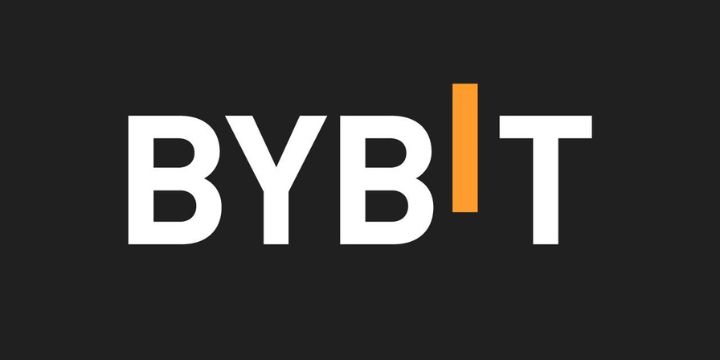Have you ever wondered why the price of Bitcoin changes so much and so fast? Many people do. One reason is how trading platforms work, especially with something called margin trading.
Margin trading lets traders borrow money to buy more Bitcoin than they can afford on their own. This can make prices go up or down very quickly.
One interesting fact is that margin trading isn’t just for big investors; regular people can try it too, but it’s risky. Our blog post will explain everything about how trading platforms and margin trading affect Bitcoin prices .
Create your account now, and use the promo code ‘64948’ for a chance to receive exclusive gifts and win $30,000 deposit rewards.
We’ll talk about what margin trading is, its benefits and dangers, and how all this makes prices change. Get ready to learn a lot! Keep reading to find out more.
Key Takeaways
- Margin trading lets investors borrow money to buy more Bitcoin, which can make the price of Bitcoin go up or down quickly.
- Trading platforms have a big impact on Bitcoin prices because they allow margin trading with leverage. This makes the market for cryptocurrencies like Bitcoin more volatile.
- Regulated exchanges offer more safety and rules than unregulated ones, but both types play a role in how people trade Bitcoin and affect its price.
Understanding Margin Trading in Cryptocurrency
Margin trading in cryptocurrency involves borrowing funds from a broker to trade digital assets. Traders can amplify potential profits or losses by using leverage.
Definition of Margin Trading
Margin trading in cryptocurrency allows investors to borrow money to invest more than they have. This method can amplify profits if the market moves favorably. But, it also increases the risk of losses when the market does not move as expected.
Traders use this strategy to leverage their positions in hopes of gaining from small price movements.
Using borrowed funds, traders open positions much larger than their own capital would allow in spot trading. This approach makes margin trading popular among those looking to maximize their potential returns on investments within volatile markets like cryptocurrency.
However, the increased possibility for higher gains comes with a greater risk for substantial losses, making it crucial for investors to proceed with caution and fully understand the implications of leveraged trading.
How Margin Trading Works
- Crypto margin trading allows investors to borrow funds from a brokerage or exchange to increase their buying power when trading cryptocurrencies.
- Investors can use the borrowed funds, along with their own capital, to open larger positions in the market than they could with only their own money.
- Leverage ratios can vary, allowing traders to control larger positions relative to their initial investment.
- For example, a leverage ratio of 2: 1 means an investor could control a position worth twice their initial investment.
- If the trade is profitable, the investor keeps the gains based on the total position size but if it goes against them, losses are also magnified.
Leverage and Margin Levels
Crypto margin trading involves using borrowed funds to increase an investor’s market exposure. Leverage levels can vary, offering the opportunity to amplify potential profits while also increasing the risk of significant losses.
Understanding margin levels is crucial for investors as it determines the amount required to open and maintain a leveraged position, influencing the overall risk involved in crypto margin trading.
It’s essential for investors to carefully consider leverage and margin levels before engaging in such activities, weighing the potential benefits against the increased risks associated with amplified market exposure.
Advantages and Risks of Margin Trading
Margin trading offers the advantage of leveraging borrowed funds to potentially amplify profits. This can be particularly beneficial for experienced traders in taking advantage of market opportunities and maximizing returns without tying up a large amount of capital.
However, it also poses significant risks as any losses incurred are amplified, potentially resulting in substantial financial setbacks and even exceeding the initial investment. While offering the potential for higher gains, margin trading demands careful risk assessment and comprehensive understanding of market dynamics to navigate its volatility effectively.
In addition, margin trading is legally permissible; however, it requires meticulous attention to risk management strategies due to its inherently high-risk nature. Engaging in margin trading demands a cautious approach where investors carefully weigh the potential benefits against the considerable risks involved before delving into leveraged cryptocurrency trades on specific platforms designed for such activities.
Impact of Trading Platforms on Bitcoin Price Fluctuations
Trading platforms significantly influence Bitcoin price fluctuations through the facilitation of margin trading and leverage, impacting the volatility of the cryptocurrency market.
To uncover more insights about this pivotal role, dive into our blog.
How Trading Platforms Contribute to Price Fluctuations
Trading platforms play a pivotal role in contributing to price fluctuations in the cryptocurrency market. These platforms serve as the infrastructure for buying and selling digital currencies, providing real-time market data, which influences investors’ trading decisions.
Additionally, crypto exchanges offering margin trading allow investors to amplify their positions through leverage. The popularity of margin trading has led to increased market volatility as it can magnify both gains and losses, directly impacting the price movements of cryptocurrencies such as Bitcoin.
Furthermore, some unregulated exchanges may fuel speculation and manipulation due to less oversight compared to regulated platforms, further intensifying price fluctuations.
Impact of Margin Trading on Bitcoin Price
Margin trading in the cryptocurrency market, particularly for Bitcoin, significantly impacts price movements. With the ability to trade using borrowed funds, investors can magnify potential gains but also expose themselves to higher risk.
This heightened speculation and leverage often lead to increased volatility in Bitcoin prices on various trading platforms. Additionally, as margin trading becomes more popular and accessible on these platforms, it amplifies the potential influence on Bitcoin’s price fluctuations due to increased leveraged positions being taken by traders.
Margin trading has a tangible impact on Bitcoin’s price dynamics as it allows for amplified speculative activities through leveraged positions. As a result of this influx of leveraged investments, the marketplace experiences heightened volatility leading to frequent and substantial shifts in Bitcoin’s price.
Comparison of Regulated and Unregulated Exchanges
After discussing the impact of margin trading on Bitcoin price fluctuations, it becomes critical to understand the differences between regulated and unregulated exchanges. These platforms play a significant role in the crypto market, influencing trading strategies and the overall stability of digital currencies.
| Criteria | Regulated Exchanges | Unregulated Exchanges |
| Legal Compliance | Must adhere to financial laws and regulations. | Operate with less oversight, often outside strict legal frameworks. |
| Security | Generally offer higher security measures and are required to protect users’ funds. | May have less stringent security protocols, increasing the risk of hacks. |
| User Protection | Provide more robust user protection, including insurance mechanisms in case of theft. | Lack comprehensive protections for users, posing higher risks to investments. |
| Transparency | More transparent in their operations, providing users with clear information on fees, risks, and procedures. | Can be less transparent, often providing vague details about their operational practices. |
| Liquidity | Typically have higher liquidity due to larger user bases and trust levels. | May struggle with liquidity issues, affecting the ability to execute large trades effectively. |
| Market Manipulation | Subject to regulations that minimize the risk of market manipulation. | Potentially more susceptible to manipulative practices due to lack of oversight. |
| Access to Markets | Offer access to a wide range of markets, including futures and options. | Access may be limited to spot trading with fewer financial instruments available. |
This comparison underscores the importance of choosing the right trading platform. Investors must weigh the advantages of regulated exchanges, such as security and user protection, against the potential benefits unregulated platforms might offer, like higher leverage options. Selecting a platform that aligns with an investor’s risk tolerance is crucial for navigating the volatile cryptocurrency market effectively.
Conclusion
As we wrap up, consider the potential impact of margin trading on Bitcoin price. How can leveraging trading platforms affect crypto prices? Is it practical to engage in leverage trading for potential profits, despite its risks? What steps will you take after learning about these strategies and their importance in cryptocurrency trading? Explore further resources and stay motivated as you navigate this evolving realm!




![Bybit Review [currentyear]: Exchange Features, Fee, Pros and Cons 5 Bybit Featured Image](https://coinwire.com/wp-content/uploads/2022/06/Bybit-review-1024x683.png)
![MoonPay Review ([currentyear]): Fees, Pros & Cons, and Sign-Up Guide. 6 Moonpay Review Featured Image](https://coinwire.com/wp-content/uploads/2023/09/moonpay-review-featured-image-1024x683.jpg)
![The Complete Guide to Add Bitcoin to MetaMask Wallet ([currentyear]) 7 Add Bitcoin To Metamask Featured Image](https://coinwire.com/wp-content/uploads/2023/05/add-bitcoin-to-metamask-1024x683.jpg)
![Binance Futures Quiz Answers (Updated in [currentmonth] [currentyear]) 8 Binance Futures Quiz Answers Featured Image](https://coinwire.com/wp-content/uploads/2022/12/binance-futures-quiz-answers-1024x683.png)
![Best Crypto Exchanges in Philippines (Updated in [currentmonth] [currentyear]) 9 Best Crypto Exchanges In Philippines Featured Image](https://coinwire.com/wp-content/uploads/2024/04/best-crypto-exchanges-in-philippines-featured-image-1024x683.jpg)